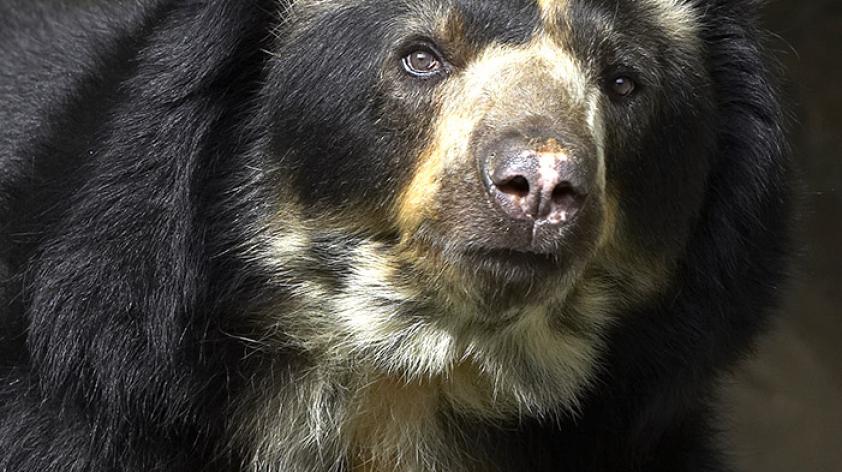
Learning What We Can Learn From Camera Trap Photos: Part 2
Can an Andean bear's nose be a way to determine its age?
I recently wrote about how we’ve determined that, with caution, researchers can identify individual Andean bears in camera trap photos. Researchers should therefore be able to answer some basic questions that have big implications for Andean bear conservation. However, there are many other important questions for which we still don’t have answers. For example, does the population in this watershed have an age structure that will be stable over the long-term? How do you figure out how old an animal is when it was born in the wild years ago – 2 years ago, 8 years ago, or 14 years ago? Field researchers often use characteristics of mammals’ teeth to estimate their ages, but those methods require capturing the animals and it is definitely not easy to capture Andean bears. It turns out that we can use camera traps. I might not have seriously considered using camera trap photos to investigate these kinds of questions except for a conversation with a field researcher from our collaborator, the Spectacled Bear Conservation Society. When I showed him a photo of an Andean bear living at the San Diego Zoo, he said “Wow, that’s an old bear!” He was correct, but how did he know that? He couldn’t describe exactly what it was about the photo that suggested that the bear was old, but I remembered that several years earlier some researchers had documented that the nose color of African lions changes as they age. Might the same thing happen in Andean bears? Using photos of known-age bears from various zoos, we’ve determined that although the changes in nose color aren’t as predictable as we’d like, they’re consistent enough to provide some information about the age of the individual bear. And, using photos of captive- and wild-born cubs, we’ve verified that it’s possible to estimate the ages of young cubs from camera trap photos. Since fewer than a dozen Andean bear birth dens have ever been found in the wild, this could be really helpful in determining when female bears give birth to cubs. That information, in turn, is the first step in determining why females give birth then, and not at other times of the year.
Notice the changes in Tommy's nose from when he was (left to right) 2, 17, and 23 years old.
Another set of conservation research questions can only be answered with information on the genetic structure of a population, or information on how individuals are related to one another. Does the population in this mountain range have a functional connection to other populations or is it isolated and inbred? What traits affect the probability that a female, or male, will have surviving offspring? Who knows which cub was sired by which male? Do cubs look like their parents? In other words, do the facial markings of cubs look like the facial markings of their parents? The only Andean bears with known mothers and fathers are the cubs born in captivity, so I worked with collaborators to test whether the markings of related captive-born Andean bears looked more similar than the markings of unrelated captive-bear Andean bears. They don’t. Sometimes bears that are closely related look alike, but sometimes they don’t. On the other hand, sometimes bears that look alike are closely related, but sometimes they’re not related at all. So, although it might be tempting to say that a cub which looks like an adult male is the offspring of that male, that’s a potentially misleading conclusion. We’ll just have to wait for the development of good genetic tools before we can answer questions about the genetics or kinship structure of Andean bear populations. After thorough review and discussion by other scientists, this work has been published online in PeerJ, where you can read the details and see more photos.













